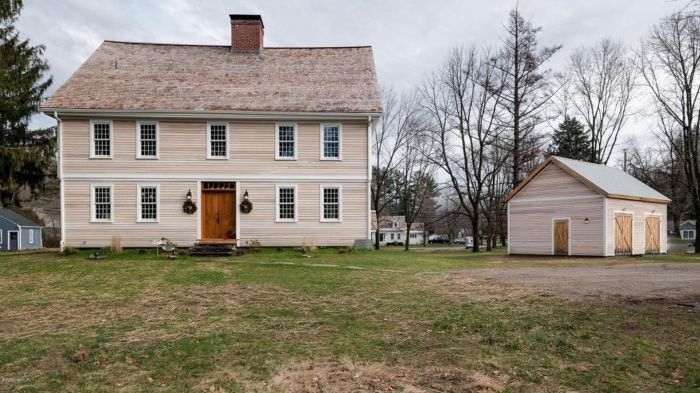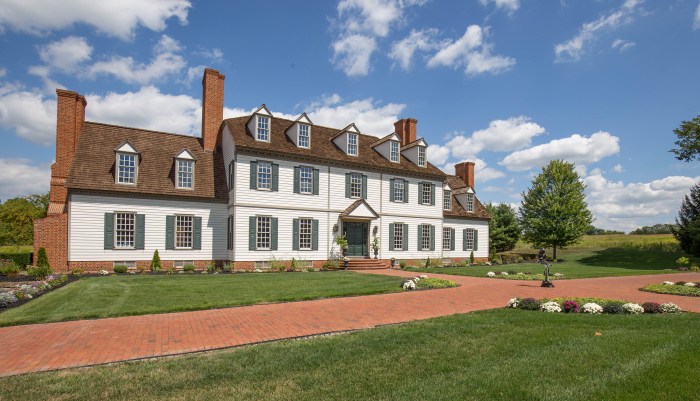Colonial Investment Properties A Historical Perspective

Colonial investment properties offer a unique lens through which to explore the intertwined histories of real estate, economic development, and cultural exchange. From the grand plantations of the Americas to the bustling trading posts of Asia, these properties tell a compelling story of power, wealth, and the lasting impact of colonialism on global landscapes.
This exploration delves into the motivations behind colonial investments in real estate, the diverse types of properties that emerged, and the legal and regulatory frameworks that governed their ownership and transactions. We will also examine the social and cultural implications of these investments, considering their impact on indigenous populations, urban development, and the formation of social hierarchies.
Historical Context of Colonial Investment Properties

The historical evolution of investment properties in colonial contexts reveals a complex interplay of economic, political, and social forces. Colonial powers sought to establish and maintain their dominance through strategic land acquisition and development, leading to the emergence of unique investment practices that shaped the urban landscapes and economies of colonized territories.
Motivations for Colonial Investments in Real Estate
Colonial investments in real estate were driven by a confluence of motivations, including:
- Economic Expansion: Colonial powers sought to extract resources and generate profits from colonized territories. Real estate investments, such as plantations, mines, and trading posts, provided a means to control valuable land and resources.
- Political Control: Land ownership was a key tool for asserting political dominance. Colonial powers often granted land to loyal subjects or companies as a reward for their services, solidifying their control over the territory.
- Social Hierarchy: Colonial societies were structured around a hierarchical system, with Europeans at the top and indigenous populations at the bottom. Land ownership was a symbol of status and power, further reinforcing the social divisions within colonial societies.
Key Players in Colonial Real Estate Transactions
Several key players were involved in colonial real estate transactions, each with their own motivations and roles:
- Colonial Governments: Governments played a central role in regulating land ownership and allocating land to individuals and companies. They often granted land to loyal subjects, military officers, or companies in exchange for their services or investments.
- Colonial Companies: Companies, such as the British East India Company or the Dutch East India Company, were granted vast tracts of land by colonial governments. They used this land for resource extraction, trade, and establishing settlements.
- Individual Investors: Individuals, often from the colonial power’s homeland, invested in land for a variety of reasons, including speculation, agriculture, or simply to secure a source of income.
Comparison with Modern Real Estate Practices
While colonial investment properties share some similarities with modern real estate practices, there are also significant differences:
- Land Ownership: Colonial land ownership was often based on conquest and dispossession of indigenous populations, whereas modern real estate transactions are typically based on legal frameworks and property rights.
- Motivations: Colonial investments were primarily driven by economic exploitation and political control, while modern real estate investments are more diversified, driven by factors such as personal wealth accumulation, rental income, and property appreciation.
- Social Impact: Colonial investment properties often had a significant negative social impact, contributing to the dispossession and marginalization of indigenous populations. Modern real estate practices are more likely to be subject to regulations and ethical considerations.
Types of Colonial Investment Properties

Colonial investment properties were diverse and reflected the economic and social realities of the time. From vast plantations to humble trading posts, these properties served various purposes and left a lasting impact on the development of colonial societies.
Types of Colonial Investment Properties
Colonial investment properties can be broadly categorized into several types, each with its own unique characteristics and significance:
- Plantations: Large-scale agricultural enterprises, primarily focused on the production of cash crops like sugar, tobacco, cotton, and indigo. These properties were often labor-intensive, relying heavily on enslaved or indentured labor. Plantations played a crucial role in the colonial economy, generating wealth and shaping the social hierarchy of the time.
- Trading Posts: Smaller-scale commercial ventures established at strategic locations for the purpose of trade. These properties facilitated the exchange of goods between European colonists, indigenous populations, and other colonial powers. Trading posts often served as centers of cultural exchange and economic activity, connecting different regions and markets.
- Townhouses: Urban dwellings found in colonial towns and cities, often located in densely populated areas. These properties were typically owned by merchants, artisans, and other professionals, reflecting the growing urbanization of colonial societies. Townhouses served as both residences and places of business, contributing to the economic and social fabric of colonial cities.
- Mines: Properties established for the extraction of valuable minerals, such as gold, silver, and copper. Mining operations played a significant role in colonial economies, fueling trade and industrial development. Mines often attracted a diverse workforce, including enslaved laborers, free laborers, and skilled artisans, contributing to the social and economic dynamics of colonial societies.
- Ranches: Large-scale livestock operations, primarily focused on the raising of cattle, sheep, and horses. Ranches played a crucial role in the colonial economy, providing food, transportation, and raw materials. They often employed a significant number of laborers, contributing to the social and economic development of colonial regions.
Architectural Features and Construction Techniques, Colonial investment properties
Colonial properties were constructed using a variety of materials and techniques, reflecting the resources available and the architectural styles of the time. Some common features include:
- Brick and Stone Construction: Durable and fire-resistant materials often used for building houses, churches, and government buildings in colonial cities and towns.
- Timber Framing: A common construction technique used for houses and barns in rural areas, employing wooden beams and posts to create a sturdy framework.
- Thatched Roofs: A traditional roofing material used in rural areas, consisting of layers of dried grasses or reeds placed over a wooden frame.
- Gable Roofs: A common roof design featuring a triangular shape at the front and back of the building, often seen in colonial houses and barns.
- Chimneys: Essential features for heating and cooking, often constructed from brick or stone, with multiple fireplaces serving different rooms in the house.
Examples of Notable Colonial Investment Properties
Several colonial investment properties have gained historical significance due to their architectural features, economic importance, or association with notable figures:
- Mount Vernon (Virginia): The plantation home of George Washington, the first president of the United States. Mount Vernon is a well-preserved example of a colonial plantation, showcasing the architecture, lifestyle, and agricultural practices of the 18th century.
- The Old City Hall (Philadelphia): A historic building that served as the seat of government for the Province of Pennsylvania during the colonial era. The Old City Hall is a prime example of colonial architecture, featuring a distinctive bell tower and a grand interior.
- The Boston Tea Party Ships & Museum (Boston): A museum dedicated to the Boston Tea Party, a pivotal event in the American Revolution. The museum features replicas of the ships involved in the event, providing insights into the colonial trade and the tensions that led to the revolution.
- The Jamestown Settlement (Virginia): A living history museum that recreates the early English settlement at Jamestown, Virginia. The settlement features reconstructed buildings, costumed interpreters, and exhibits that showcase the challenges and triumphs of early colonial life.
Economic and Social Implications of Colonial Investment Properties
Colonial investment properties had profound economic and social implications, shaping the development of colonial societies:
- Economic Growth: Colonial properties contributed significantly to the economic growth of European colonies, generating wealth through the production of cash crops, trade, and resource extraction.
- Social Hierarchy: The ownership and control of colonial properties played a major role in shaping the social hierarchy of colonial societies. Plantations, for example, were often owned by wealthy landowners who held significant power and influence.
- Labor Systems: Colonial properties relied heavily on various labor systems, including enslaved labor, indentured servitude, and free labor. These systems had profound impacts on the lives of workers and shaped the social and economic landscape of colonial societies.
- Environmental Impact: Colonial investment properties often had significant environmental impacts, leading to deforestation, soil depletion, and the displacement of indigenous populations.
Modern Perspectives on Colonial Investment Properties

The ownership and preservation of colonial investment properties have become increasingly complex in the modern era, sparking debates and ethical considerations that transcend the purely financial aspects of real estate. As societies grapple with their colonial past, the value and meaning attributed to these properties have shifted, demanding a nuanced understanding of their historical context and the implications of their continued presence in contemporary landscapes.
Ethical Considerations
The ethical considerations surrounding colonial investment properties are multifaceted, encompassing issues of historical memory, cultural sensitivity, and the potential for perpetuating inequalities. While some view these properties as valuable historical artifacts worthy of preservation, others see them as symbols of oppression and exploitation.
The ethical considerations surrounding colonial investment properties are multifaceted, encompassing issues of historical memory, cultural sensitivity, and the potential for perpetuating inequalities.
- Historical Memory and Reconciliation: The ownership and preservation of colonial properties raise questions about how societies confront their colonial past and reconcile with its legacies. These properties often represent a tangible link to a period of historical injustice and can evoke strong emotions for descendants of those who were colonized.
- Cultural Sensitivity and Appropriation: The appropriation of colonial architecture and design elements can be seen as insensitive or disrespectful to the cultural heritage of the colonized populations. It is crucial to ensure that the preservation and use of these properties do not perpetuate cultural appropriation or misrepresent the historical context.
- Equity and Redistribution: The ownership of colonial properties often reflects historical patterns of wealth and power, with descendants of colonizers disproportionately holding ownership. There is a growing movement advocating for the redistribution of colonial wealth and the inclusion of marginalized communities in the ownership and management of these properties.
Challenges and Opportunities
The ongoing legacy of colonial real estate presents both challenges and opportunities for contemporary societies. Navigating these complexities requires a balance between preserving historical heritage and addressing the ethical concerns surrounding these properties.
- Preservation vs. Reckoning: Balancing the need to preserve historical buildings with the imperative to acknowledge and address the injustices of colonialism is a delicate task. Finding ways to acknowledge the painful past without erasing the historical record is a challenge faced by many communities.
- Community Engagement and Ownership: Engaging with local communities, particularly those descended from colonized populations, is essential for creating equitable and sustainable approaches to colonial investment properties. This involves actively seeking input and ensuring that the benefits of these properties are shared equitably.
- Sustainable Development and Economic Growth: Colonial investment properties can contribute to economic growth and development, but it is crucial to ensure that these benefits are distributed fairly and do not perpetuate existing inequalities. This requires careful consideration of the social and environmental impacts of development projects related to these properties.
Understanding the history of colonial investment properties provides valuable insights into the complexities of global real estate markets and the enduring legacies of colonialism. By examining the motivations, practices, and consequences of these investments, we can gain a deeper appreciation for the intricate relationships between economic development, cultural exchange, and the shaping of modern societies.
Questions and Answers
What are some examples of notable colonial investment properties?
Examples include the sugar plantations of the Caribbean, the tea plantations of India, and the trading posts of the Dutch East India Company.
What are the ethical considerations associated with the ownership and preservation of colonial properties?
Ethical considerations include acknowledging the historical context of these properties, recognizing the potential for exploitation and dispossession, and ensuring equitable access and representation in their preservation and interpretation.
How do colonial investment properties relate to modern real estate practices?
Colonial investment properties provide historical context for understanding modern real estate practices, including land ownership, property valuation, and the relationship between real estate and economic development.









